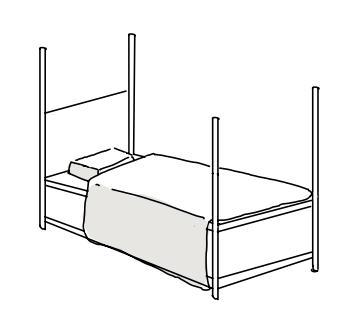A Morning Cup O’ Joe Causes A Latte Damage to the Student
Whether it be from a Double Chocolate Chip Frappuccino or a quick Monster energy drink, children and teens consume caffeine at a crazed pace. Over the past 30 years, young adults’ and childrens’ average consumption rate of caffeine has increased by more than 70%. Several studies have shown the ill effects of the stimulant on the young body.
A study supported by the Swiss National Science Foundation (SNSF) observed pubescent rodents with a caffeine intake equating to three to four cups of coffee per day. Two groups of rats were tested, one given pure drinking water and the other was administered caffeine. Measuring their brains with an electrical current, scientists found that the caffeine rats had a reduced deep sleep and a delayed brain development.
Both in humans and in rats, the duration and intensity of deep sleep as well as the number of synapses or connections in the brain increase during childhood. They reach the highest level during puberty and drop again at adult age. As the brain ages, connections are lost which makes the network of the mind more powerful. In the caffeinated rats, researchers saw more connections in the brain by the end of the study. Those select rats matured slower than their water drinking counterparts leading to differences in behavior. While normal rats became more curious with age, the rats consuming caffeine remained timid and cautious. Though rat and human brains may differ, the effects of caffeine on rodents raises the question of whether children and young adults should be consuming the occasional pick-me-ups.
In adults, studies show that there are many benefits to ingesting a moderate amount of caffeine. It can improve memory, decrease fatigue, improve mental functioning, and reaction time. Drinking three to four cups of coffee per day has been reported to having little health risks and even some benefits. Researchers say that drinking coffee may help prevent diseases such as Parkinson’s and liver disease, and does not appear to significantly increase heart disease risk or cancer. However, for children and teens, the effects look vastly different.
Many students use caffeine as a way of getting “hyped” before a game or preparing for a long studying session. They consume it in forms of candy, chips, gum, lip balm, and even sunflower seeds, all conveniently marketed towards youths. However, caffeine has no nutritional value. As a stimulant that affects brain chemistry, it can disrupt neural development and may lead to anomalies in behavior and socialization. It can also cause a physical dependence which may leave a child with withdrawal symptoms of headache, sleepiness or insomnia, irritability, lethargy, and/or depression. In youths, caffeine does not boost energy levels. It simulates a sense of awakeness by stimulating brain arousal and vigilance which disrupts the perception of fatigue. Because of caffeine’s bitter taste, products with the stimulant have absurd amounts of sugar added to make it palatable. This can lead to obesity through empty calories. According to the American Academy of Pediatrics, there is no safe level of caffeine for children and should be eliminated from youths’ diets.
Thinking that caffeinated products like energy drinks will boost performance and energy is a common misconception. In both school and on the field, performance is worsened due to fatigue caused by caffeine. As caffeine’s effects are dependent on body weight, the stimulant gives children an amplified version of the alertness, anxiety, nervousness and insomnia that it produces in adults. With all of the adverse effects in mind, students and parents should keep in mind exactly how much they depend on caffeine to get them through the day, and how much it affects them. At the end of the day, the caffeine consumed will likely negatively effect your body, academically and physically.
Hello there! Our goal is to provide relavent, engaging journalism for readers of all ages. Your donation will support the student journalists of the Wolfpacket at Claremont High School, and will allow us to purchase equipment, print our monthly issues, and enter in journalism competitions. We appreciate your consideration!

Michelle Wang is a senior and the current Editor-in-Chief of the Wolfpacket. Wang has been a part of the Wolfpacket for four years, beginning as a reporter...







